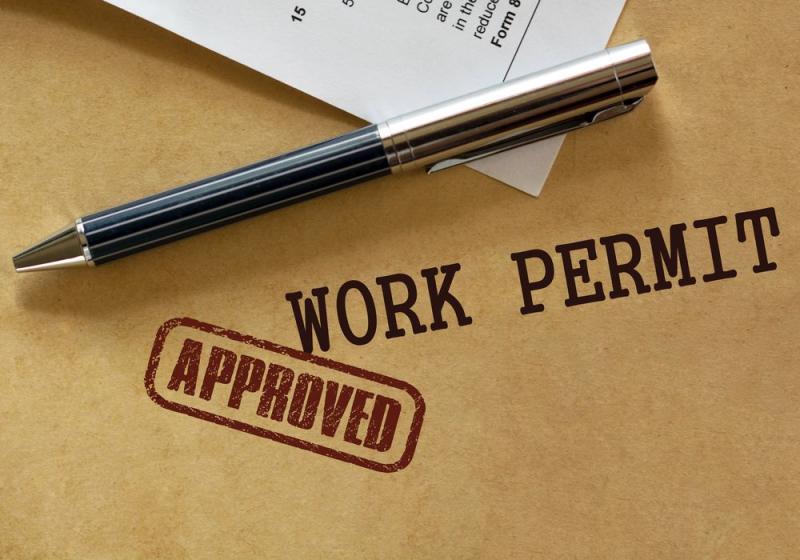A visa is an official document or stamp in a passport that lets a person enter, stay in, or leave a country for a certain amount of time and for a particular reason. Visas can be given for many reasons, such as travel, business, or school. A work permit, on the other hand, is a legal document that lets a foreigner work in a country. It is usually given after the foreigner gets the correct visa. The main difference between a visa and a work permit is that a visa gives you permission to enter and stay for a short time, but a work permit gives you permission to work. Most of the time, you need both a valid visa and a work permit to work legally in another country.
What is a Visa?
A visa is an official document or endorsement, usually stamped or attached to a passport, that lets a foreigner enter, stay in, or leave a country for a specific reason and for a set amount of time. Visas are given out by a country’s immigration authorities to control and monitor foreigners’ entry and stay, ensuring they follow the host country’s laws and rules.
There are different kinds of visas, such as tourist visas for travelling for leisure, student visas for school, business visas for going to business meetings or conferences, and work visas for work. Each visa type has its rules and requirements that the applicant must follow to get the visa.
When you apply for a visa, you usually have to send in information about yourself, your travel plans, and supporting documents like financial statements, letters of invitation, or employment contracts. When the visa is approved, it is given to the applicant and stamped or attached to their passport.
Visas usually limit how long you can stay, how often you can enter and leave the country, and what you can do there. If you overstay your visa or break its rules, you could be fined, deported, or told you can’t revisit the country. So, a visa is an essential travel document that keeps a country’s security and sovereignty while allowing people to move across borders and work with people from other countries.
What is a Work Permit?
A work permit is a legal document given by a country’s government or immigration office that lets a foreigner work in that country for a specific job and employer for a certain amount of time. Work permits are meant to control and track how foreigners are hired, ensuring they follow local labour laws and protecting both local and foreign workers.
A job offer from an employer in the host country is usually needed to get a work permit. Depending on the country and type of job, the employer may need to show that no local person can do the job. After getting a job offer, applicants usually apply for a work visa or a work visa and permit at the same time, depending on the host country’s rules.
To get a work permit, you have to send in your personal information, the job offer, the employment contract, and any other required documents. Once the work permit is given, there may be limits on where you can work, how long you can work there, and who you can work for.
Work permits are essential for regulating international employment, ensuring a stable job market, and protecting workers’ rights. Foreigners who work without a valid work permit can face fines, deportation, or being told they can’t travel in the future. In the same way, employers who hire foreign nationals without the proper paperwork may have to pay fines.
Difference Between Visa and Work Permit
When it comes to travelling internationally and finding a job, visas and work permits serve entirely different purposes.
A visa is an official document or endorsement, usually in the form of a stamp or affixation to a passport, that allows a foreign national temporary entry into, transit through, or exit from a country. Applying for a visa to the immigration authorities of the destination country usually entails providing details about oneself, one’s intended itinerary, and one’s financial resources. Several types of visas are provided for different purposes, such as tourism, education, and business, and each type of visa has its own set of restrictions.
However, a work permit is a document given by immigration officials or the government of a country that allows a foreign citizen to work for a particular employer within the country’s boundaries, in a specific occupation, and for a certain length of time. The purpose of work permits is to protect both domestic and international workers by establishing guidelines for the hiring of foreign nationals. In most cases, applicants seeking work permits need to first get a job offer from a host-country employer before beginning the application procedure, which entails submitting personal information, the job offer, and any necessary supporting papers.
Briefly, a work permit enables employment in the host country, while a visa grants admission and temporary stay for other purposes. Depending on the laws of the nation where you plan to work, you may need both a visa and a work permit to do so lawfully.






